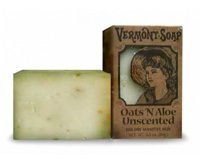Please choose a body region on the right for you to pin point the problem area of your body.

Shop by Condition

Shop by Brand
Gil Yosipovitch, MD, and Judy Hu, MD
 Excerpted and adapted with permission from HMP Communications.
Excerpted and adapted with permission from HMP Communications. Other Factors that Affect pH
There are many diseases that cause an increase in skin surface pH. Skin conditions that can cause this phenomenon include:
• Eczema
• Contact dermatitis
• Atopic dermatitis
• Dry skin
Acute eczema with erosion can cause skin surface pH to shift from normal to 7.3 to 7.4. This is a 1,000- fold increase in the pH shift, as pH is measured in logarithmic function. The entire skin surface pH is increased on skin of people with atopic dermatitis. An increased skin pH contributes to Staphylococcus aureus colonization, which can play a role in the genesis of atopic dermatitis, discoid eczema, and infective dermatitis as a superantigen.
Systemic diseases that can cause an increase in skin surface pH include:
• Diabetes
• Chronic renal failure
• Cerebrovascular disease
The explanation for the elevated pH in these diseases is not clear but is possibly related to low levels of phospholipase and to autonomic dysfunction causing abnormal sweat secretion. An increase in skin surface pH encourages bacterial growth. Patients with diabetes have an increase in skin surface pH in intertriginous areas, and it’s known that patients with diabetes are more prone to Candidal infections, especially in intertriginous areas. Studies have shown that Candidal skin lesions are more pronounced on skin with higher pH values, possibly due to a pH dependence of the yeast’s virulence capacity and/ or a modulation of the host defense capacity.
C.albicans is dimorphic, and an acidic pH favors the blastospore form, while an increased pH favors the hyphael form. The hyphael form of Candida is the initial invader that grows best at pH>6.5, and patients with diabetes have a decreased level of skin lactic acid. The use of skin occlusive products, such as dressings and diapers, are known to raise skin pH and are associated with skin infections caused by C. albicans.
Products to Use to Maintain pH Levels
There are three main categories of cleansing agents:
• Soaps
• Synthetic detergents
• Lipid- free cleansing agents
It’s been shown that soaps make the skin more alkaline than synthetic detergents. The irritancy potential of cleansing agents is dependent on a number of factors, which include pH, and soaps are known to increase skin surface pH. Acidic cleansers are less irritating than neutral or alkaline ones, and people prone to dry skin are advised to use acidic cleansers. Agents with slightly acidic or neutral pH, nonionic surfactants, may be preferable for patients who are at increased risk for irritating skin reactions. Therefore, advise patients with skin conditions to choose a mild cleaning agent with a low pH. Even minor differences in the pH of skin cleansing preparations can be important to the integrity of the skin surface. This should be taken into account when determining the optimal soap.
What’s Really on the Market
Since the effectiveness of low pH soaps and cleansers has been well documented, one would think that companies producing home care products in this fashion. However, the market in the United States carries very low- pH soaps and cleansers. Unless we, as clinicians, educate our patients about the importance of low- pH cleansers and what’s available, they won’t know to look beyond the most common soaps on the market. Most cleansers in the United States, with a few exceptions, are at a pH of 9.5 to 10.5. This pH is inherent to the formula, which is a sodium soap of fatty acids. The formulas that have a neutral pH are called “ syndet.” Chemically, they are not soaps, but a synthetic detergent in a bar form (thus their names).
< View Personal Hygiene Products
| Stay Connected! | |
|
|
|
Get $10 off your next order when you sign up to receive our email newsletter.*
Simply enter your email address below!
*Minimum order value of $100. Valid email address to qualify.








